Think climbing a mountain is hard? Give via ferratas a try
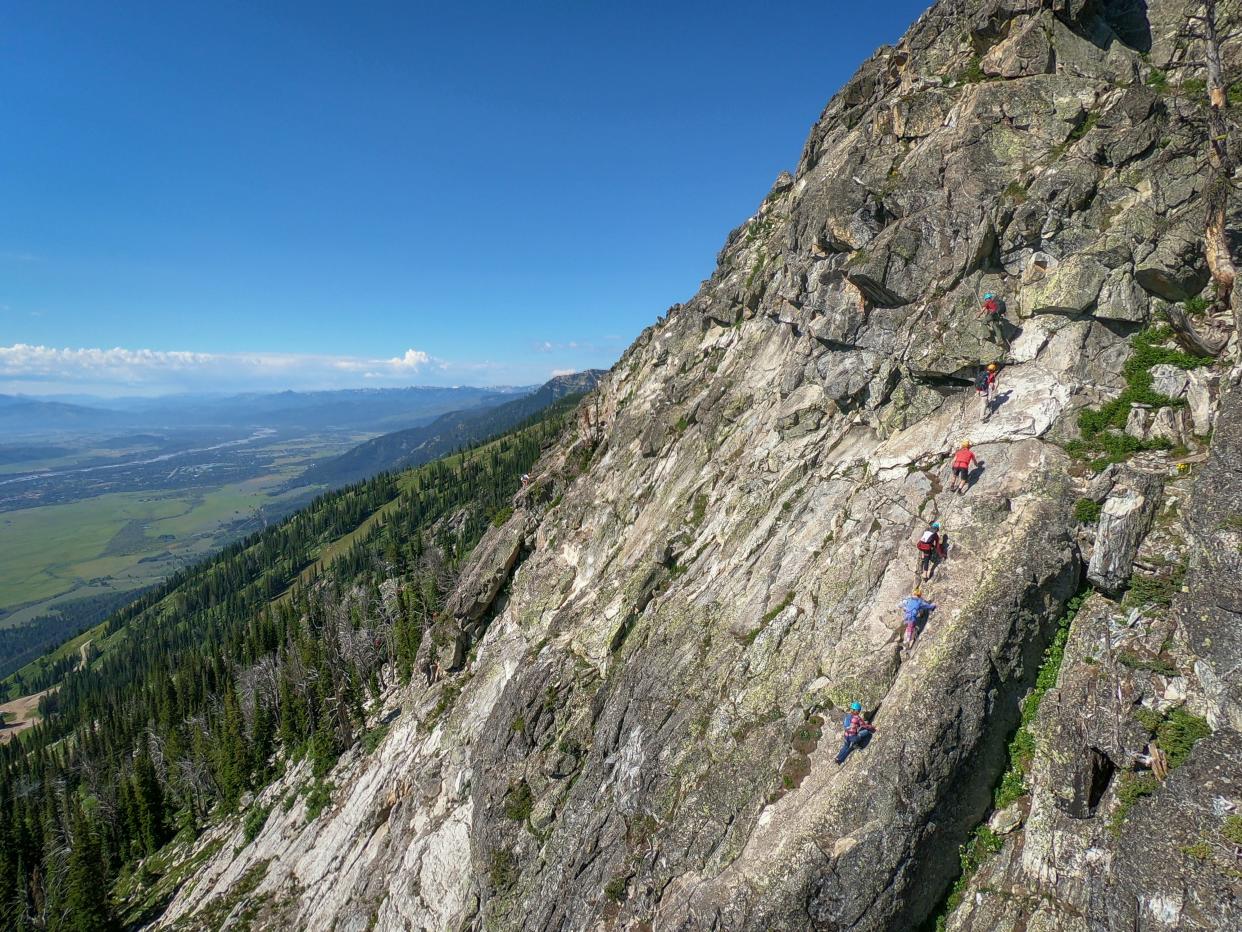
Few outdoor adventures offer the payoff rock climbing does — a screensaver-worthy shot from a summit, along with a story you’ll never tire of telling. The boasting and epic views are rewards for years spent learning climbing routes, which is why hanging off the side of a mountain isn’t on most itineraries. But a via ferrata mountain climb changes that: Now nearly anyone can reach the summit and live to tell the tale.
Translated from the Italian phrase for iron way or road, a via ferrata is a mountain-climbing course comprised of steel rebar steps, handholds and safety cables drilled and epoxied into the rock face. Wearing a safety harness and helmet, climbers clip into cables that stretch along the route. Should you slip, the harness arrests your fall, while the rebar helps you move from step to step. Along with a guide coaching climbers along the way, the harness and steel rung route give newcomers the confidence to scramble up the mountain.
Routes are a mixture of vertical climbing and walking, while some include features such as ladders, tightrope-like walkways and suspension bridges.
Before World War I, Austro-Hungary and Italian soldiers installed via ferratas to make it easier for troops to traverse the Dolomite Mountains. The routes remained until recreational climbers started using and improving them in the 1960s. Since then, hundreds of via ferratas have been installed across Europe and stateside. The first via ferrata route opened in the U.S. in 2001 at Kentucky’s Red River Gorge.
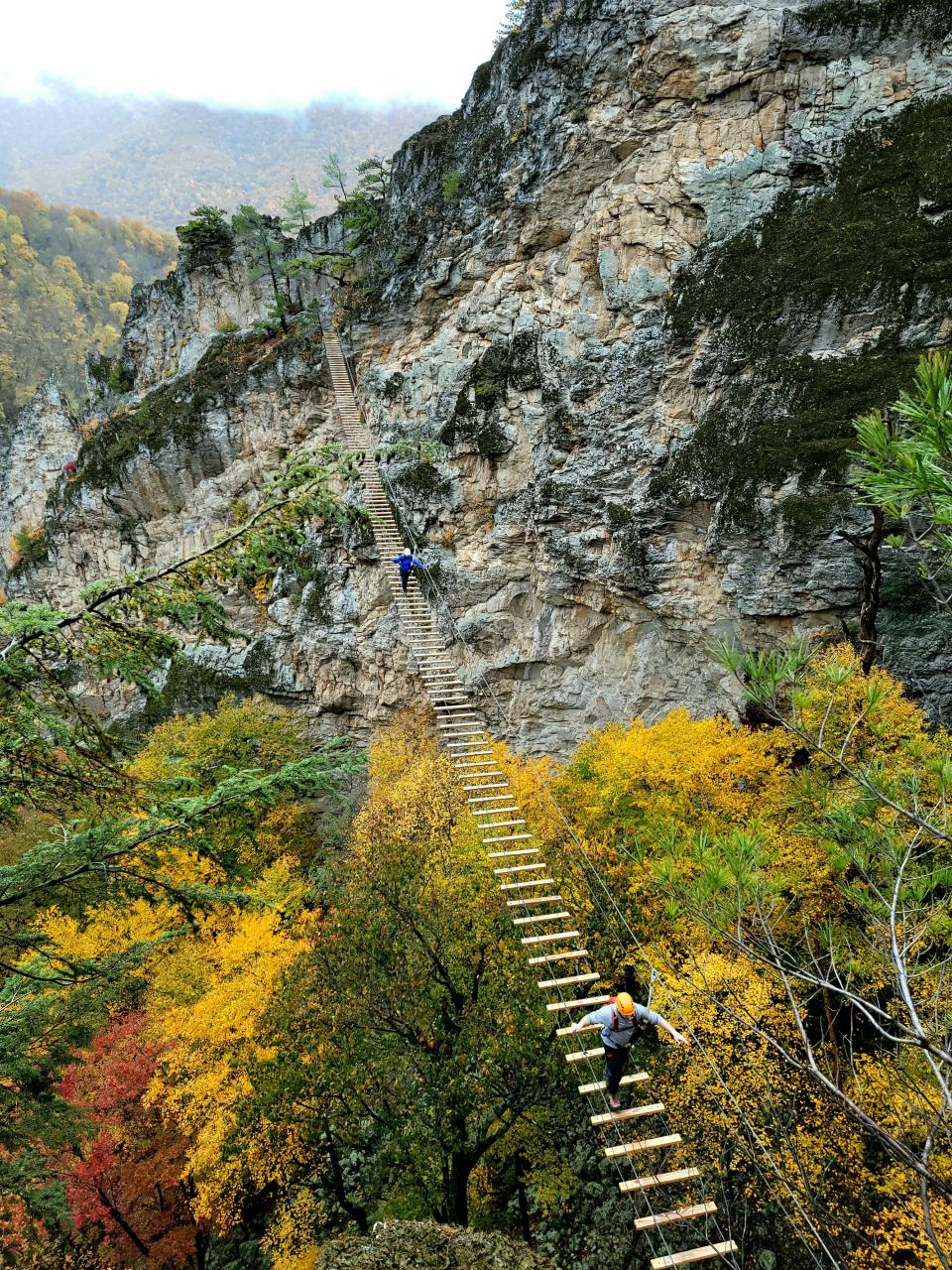
Good time to climb
In traditional ski resort locations, via ferratas, along with activities like mountain biking, help draw visitors during the summer months when the terrain is safe to climb. Generally, via ferratas are seasonal, opening in late spring, after the snow clears, until early fall when the venues shift attention back to skiing. Most sites offer guided tours, perfect for rookies or families who want to climb together.
Harriet Flynn of Harrisonburg, Va., who climbed the via ferrata at NROCKS Outdoor Adventures in Circleville, W.Va., so often that she is now a mountain guide who helps others, has seen the thrill from both sides. “I still have that same experience seeing the big views,” she says. “As a guide, being able to take pictures of people looking like they’ve just done the most amazing thing in their whole life is really exciting.”
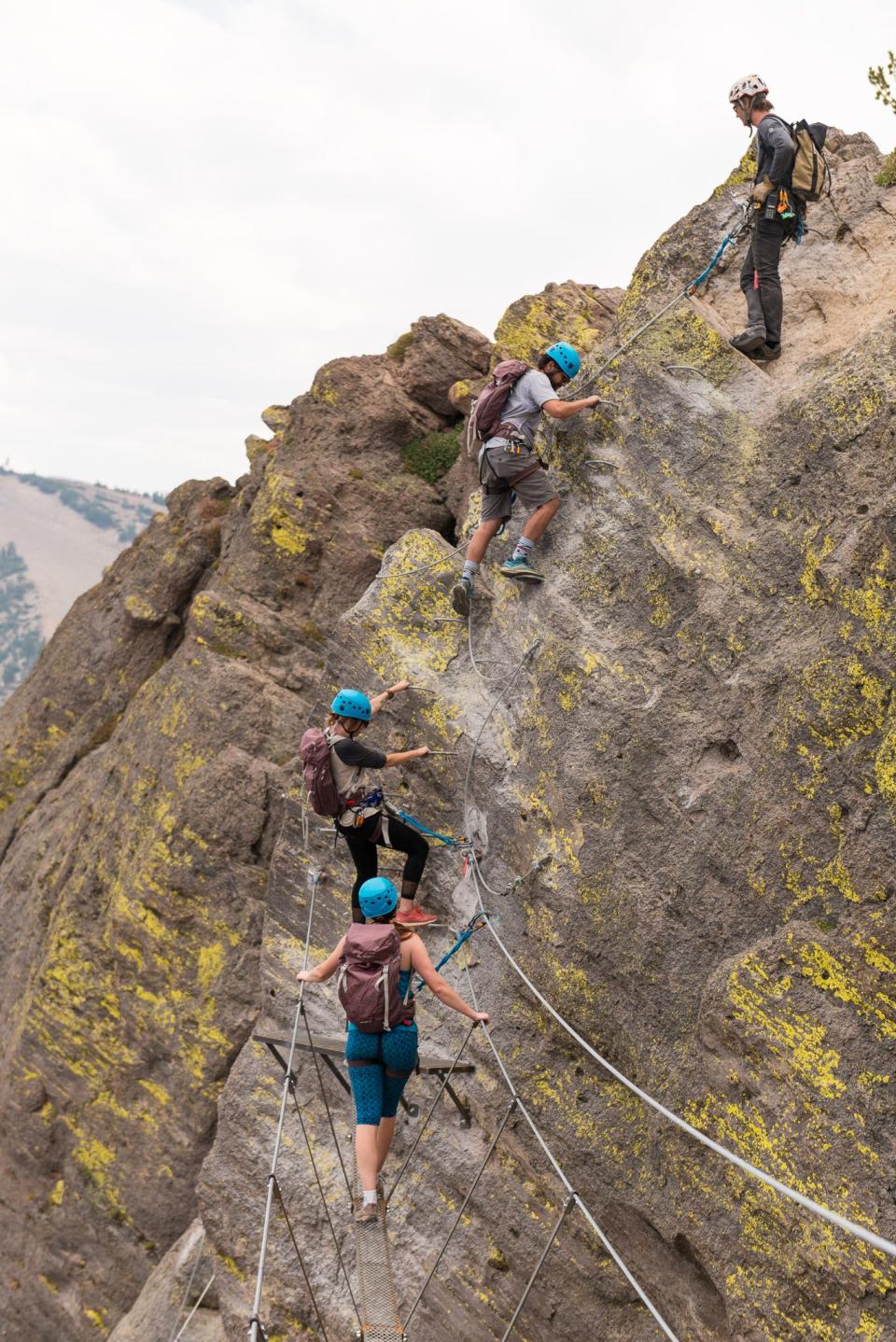
Michelle Steinhardt, New York-based founder of the Trav Nav travel blog, is a recent via ferrata convert who climbed a trail at California’s Mammoth Mountain last summer. “I’m not a climber, so via ferrata was my first climb. They say it’s great for all skill levels, and that was true for me,” she says.
'Savor the moment'
While a healthy respect for heights and the ability to deal with them is essential, a via ferrata is far less physically demanding than traditional climbing, and most mountains have routes that vary in length, elevation and difficulty. “Have a calm state of mind knowing you cannot fall so you can be present and savor the moment,” is Mark Lakin’s advice after the New York City-based travel photographer and influencer scaled the 900 vertical feet at the via ferrata at Tordrillo Mountain Lodge in Alaska. “It was absolutely mind-blowing — goosebumps from head to toe.”
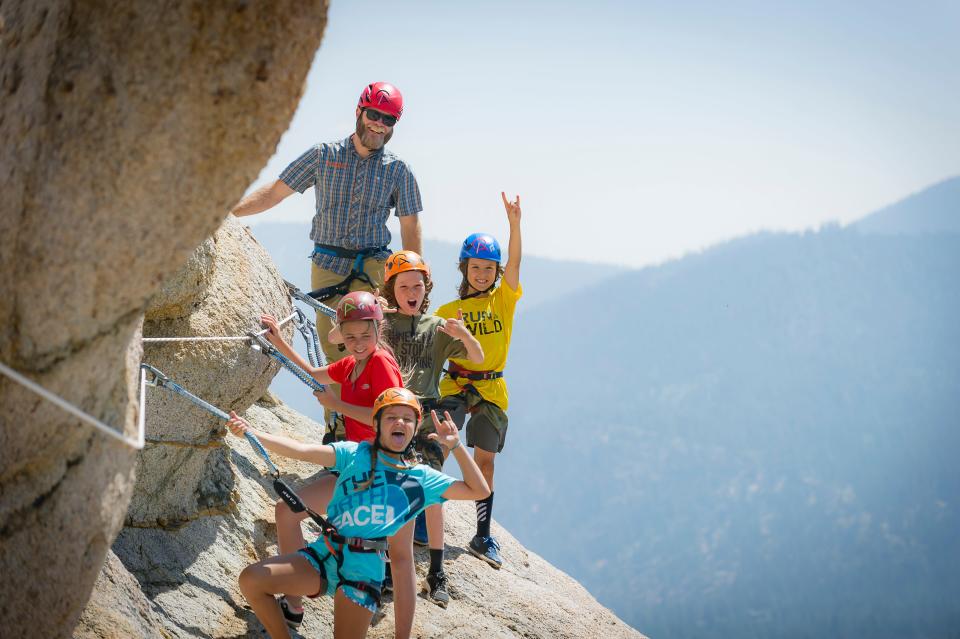
User-generated review websites like alltrails.com can be a good way to gauge climb difficulty levels. Check ahead for any via ferrata you’re interested in, as many require a reservation and have age and weight limits for the harnesses. Climbs can range from about three or four hours to closer to six hours. If scaling a mountain is on your bucket list, here are some places where you can consider checking it off:
Arapahoe Basin; Dillon, Colo.
Plan to spend a full six hours to make it to the top of America’s highest via ferrata. You’ll scale 800 vertical feet to a 13,000-foot summit with 360-degree views. Entirely above the tree line, climbing here takes advantage of Colorado’s high-alpine environment. From $155 per person for four hours
NROCKS; Circleville, W.Va.
With views of the Allegheny mountains, the route at NROCKS Outdoor Adventures takes you up a pair of fin-shaped quartzite rocks that are connected by a 200-footlong bridge that’s 150 feet off the ground. Push forward to see West Virginia’s highest point, Spruce Knob. And if climbing during the day isn’t challenging enough, guides offer night tours where the bright full moon illuminates the handholds (you’ll still want to use the provided headlamp). From $125 per person for up to five hours
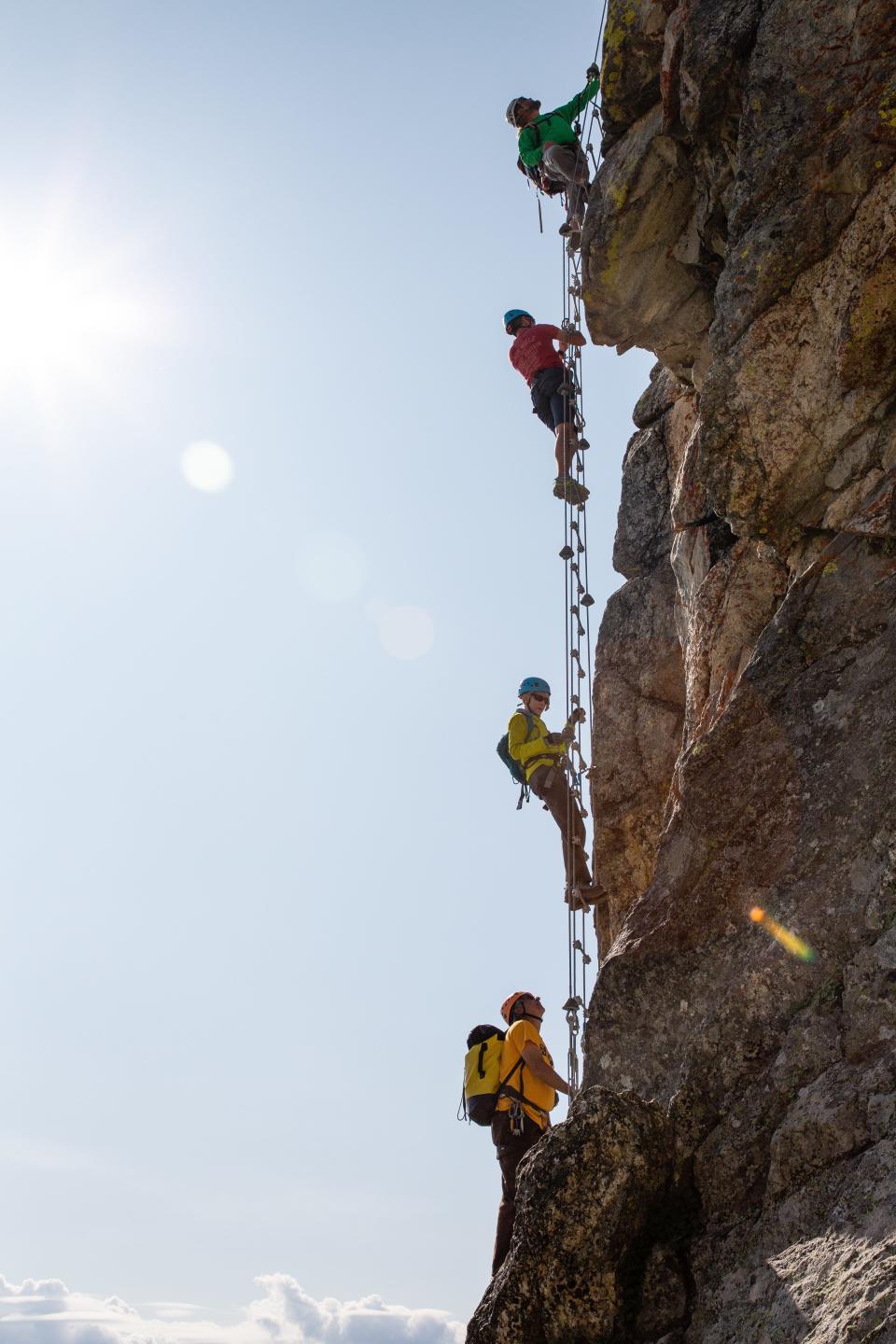
Taos Ski Valley; Taos Ski Valley, N.M.
The 100-foot-long bridge about 50 feet high helps beginners get comfortable with heights. But there are other, more difficult options here too, including climbing the face of Kachina Peak. You’ll have views of Rio Hondo and Wheeler Peak Wilderness behind you with a 30-foot-long catwalk 20 feet high ahead. From $275 per person for three hours
Mammoth Mountain; Mammoth Lakes, Calif.
Mammoth offers a few routes, from easy to difficult, that traverse the Caldera Overlook. Rookies should stick to the thrills of Facetime while more seasoned climbers might prefer the Nose, which is loosely based on the route at Yosemite’s El Capitan. From $100 per person for three hours
Jackson Hole Mountain Resort; Jackson Hole, Wyo.
Pick from six routes — a seventh is planned to debut this summer — to explore the Teton ridges. After a short gondola ride to the gateway area, you’ll be fitted for gear, including proper footwear, before choosing a route based on your experience. This family-friendly resort has enough diversity to challenge adrenaline junkies, like climbing 500 vertical feet or crossing a 120-foot-long suspension bridge. From $450 for two people for 3.5 hours
This article originally appeared on USA TODAY: Via ferratas mountain climbing made simple

